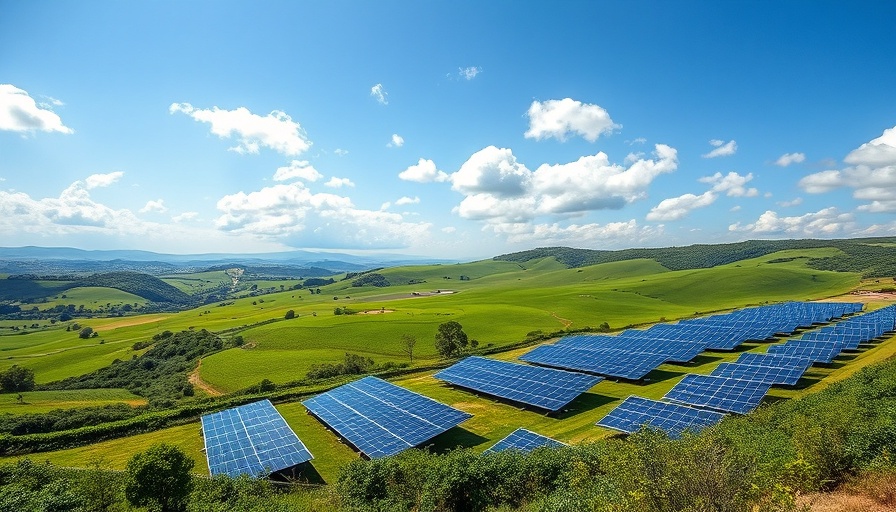
Solar Energy's Pivotal Role in Modern Agriculture
As agricultural practices evolve, the transition to renewable energy sources such as solar power is increasingly vital. Solar energy not only provides an alternative to traditional fossil fuels but opens doors to innovative farming techniques that can enhance productivity and sustainability. The agriculture sector, responsible for a significant portion of the world's energy usage, is now exploring how solar energy can help address climate change and reduce environmental impacts.
The Rise of Agrivoltaics: A Sustainable Solution
Agrivoltaics, the dual use of land for solar energy production and agricultural purposes, stands at the forefront of this evolution. This approach not only maximizes land usage but also integrates energy production with food cultivation, creating a synergistic relationship that benefits both sectors. It has been reported that agrivoltaic systems can increase land productivity by up to 73%. By combining crop production with energy generation, farmers can revolutionize their operations, ensuring food security while contributing to renewable energy goals.
Cost-Effectiveness of Solar Solutions in Agriculture
Financial considerations are paramount in the agriculture industry, where operating costs can be daunting. Solar-powered applications such as irrigation and greenhouses reduce reliance on costly diesel motors and grid electricity. By leveraging solar technology, farmers can significantly cut energy expenditure, enhance their profits, and achieve greater energy independence—a crucial element in today’s volatile energy markets.
Case Studies Highlighting Successes in Solar Agriculture
Several successful implementations of solar technology can be observed across the U.S., signifying a positive trend among agricultural producers. For instance, agricultural operations like the Topaz Solar Farm in California have demonstrated how large-scale solar can coexist with agricultural practices, providing a template for future projects. The integration of solar energy is not only practical but a measure towards sustainable practices within rural communities.
Innovations in Solar-Powered Technologies
Emerging solar technologies, such as solar-powered irrigation systems, promise to streamline operations and minimize environmental impacts. These systems offer farmers the reliability of sustainable water supplies, thereby reducing dependence on unreliable and costly energy alternatives. Additionally, they mitigate greenhouse gas emissions while improving crop yields, making them an effective solution for modern farming.
Challenges and Regulatory Hurdles for Solar Agriculture
Despite the benefits, the integration of solar energy in agriculture is not without challenges. Issues regarding land use competition, local regulations, and social acceptance pose barriers to widespread adoption. Research indicates that successful agrivoltaics projects hinge on cooperative relationships between solar developers and local communities, ensuring that agricultural interests are preserved while fostering energy production.
The Future of Solar Energy in Agriculture
Looking ahead, the agricultural sector's move towards adopting solar energy solutions presents an array of opportunities. Policymakers are increasingly recognizing the need for frameworks that support agrivoltaics while balancing land use needs. As solar technology continues to advance and costs decline, the prospect of widespread solar adoption in agriculture becomes more feasible. Together with effective policy, the agriculture industry can lead the charge toward a sustainable future.
Conclusion: Embracing Solar Energy for a Sustainable Future
Incorporating solar energy within agricultural practices is no longer an option; it's a necessity. By adopting strategies like agrivoltaics, farmers can enhance their productivity, mitigate climate impacts, and contribute positively to both the economy and the environment. As global demands for food and energy continue to rise, the promise of solar energy must be harnessed—turning challenges into growth opportunities for a sustainable and resilient agricultural future.
 Add Row
Add Row  Add
Add 



Write A Comment